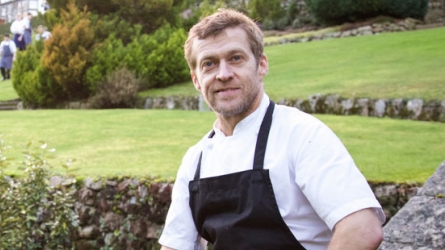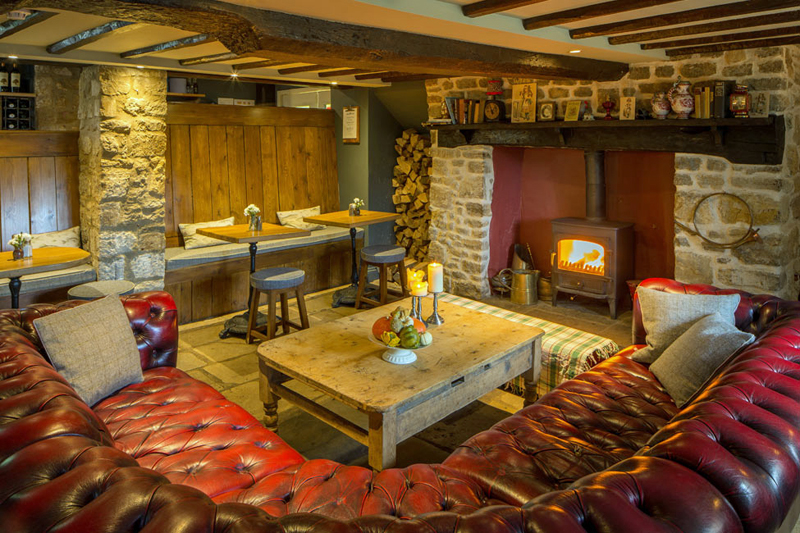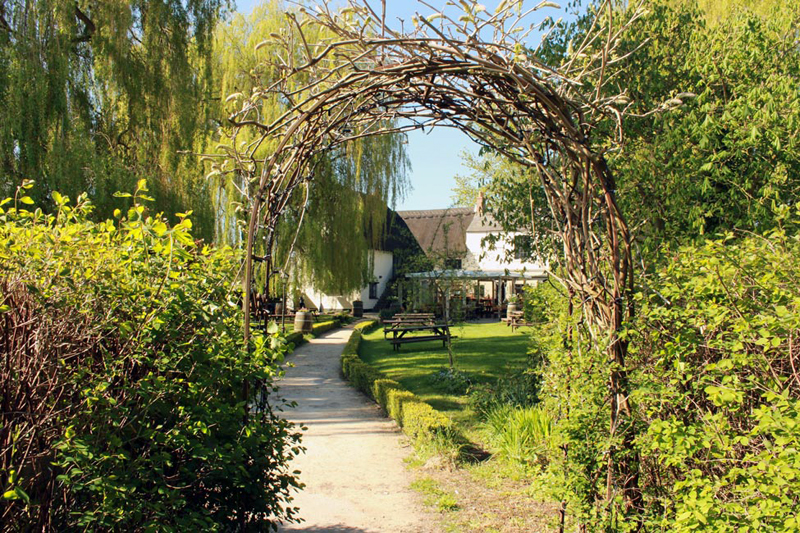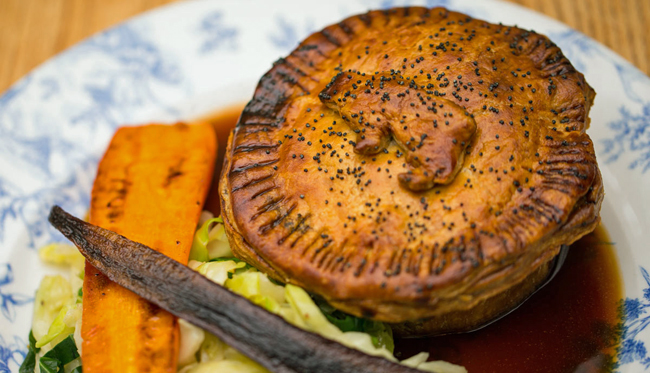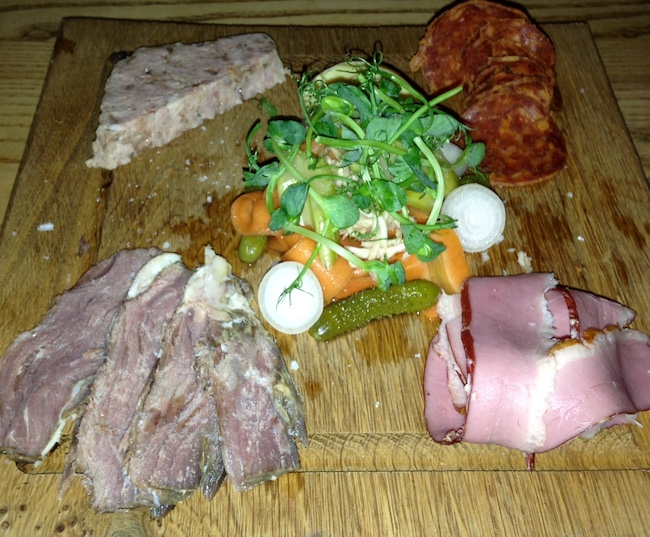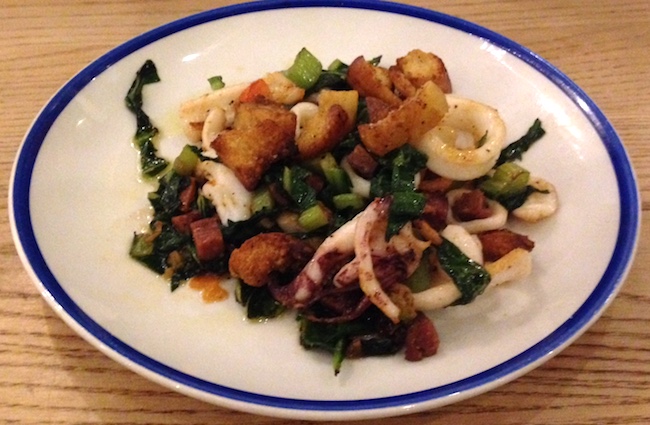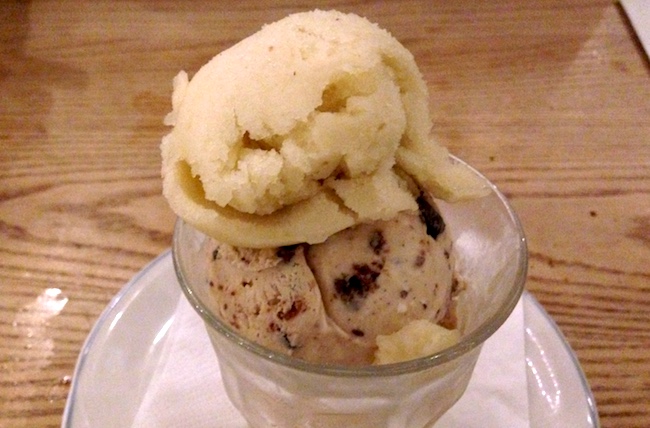
Orpington, a London suburb just 30 minutes by train from Victoria, used to be synonymous with a rather patronising notion of the aspirant middle class. The stereotype was so engrained in class-obsessed post-war Britain that ‘Orpington man’ became an early pejorative figure. However, today’s Orpington would be characterised quite differently, particularly the leafy and the prosperous area of Petts Wood. With excellent connections to inner London and a good catchment of potential clientele, this is exactly the kind of outer London area that provides great opportunities for the savvy restaurateur.
With the benefit of local knowledge provided by his business partner, Jatindar Singh, it is little surprise that Atul Kochhar seized upon this opportunity by opening Indian Essence in 2012. Today this joins Benares, Sindhu and a host of overseas ventures in the growing business empire of Kochhar and Singh.
Less than five minutes’ walk from Petts Wood Station, the restaurant occupies an unassuming spot amongst shops and other eateries. On a cold Monday evening in January, when the streets were quiet and a number of other restaurants closed, Indian Essence managed to draw in a decent crowd. Clearly this is a placed loved by locals as many of those dining appeared to be celebrating special occasions.
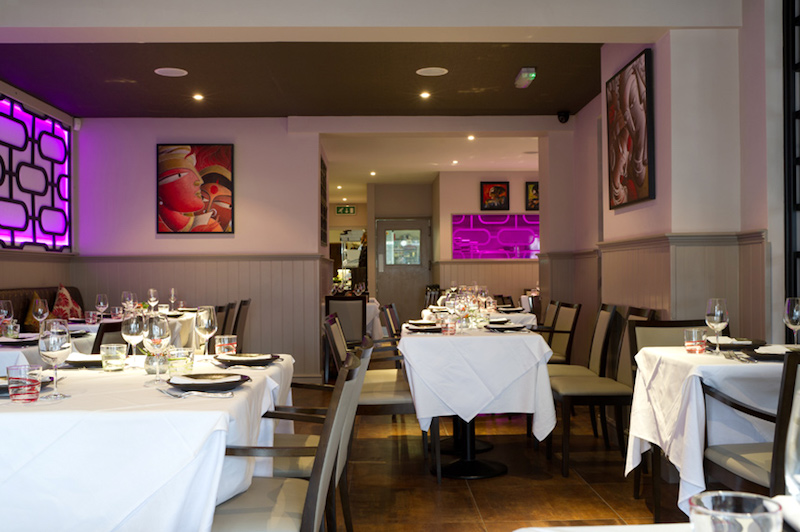
Inside the restaurant we found a light and airy space, comfortably accommodating 78 covers. The carefully chosen décor of neutral tones makes a focal point of the large picture window into the kitchen. The furniture is comfortable and tables dressed in fine napery are sufficiently spaced as to make the presence of other diners unobtrusive.
Indian Essence is billed as a neighbourhood restaurant; however it seems impossible for a chef with the acclaim of Atul Kochhar to deliver anything but a destination product. Kochhar gained his first Michelin star whilst Head Chef at Tamarind and then a second for Benares. He plays an active role in development of the menu at Indian Essence and its head chef, Kuldip, regularly visits him at his development kitchen in West London. As witnessed on our visit, his cooking retains the integrity of Indian regional cooking with inventive modern touches.
On our visit we were sampling the tasting menu which was preceded by cocktails and poppadoms. The Passion Fruit Martini was astringent and slightly sour, a perfect palate cleansing combination of flavours. The Ginger and Pineapple Mojito was equally refreshing and both drinks were complimented perfectly by mini poppadoms and a trio of fruit chutneys (mango, apple and tomato).
With appetites whetted, the amuse bouche arrived promptly. This comprised of a vegetable samosa, classically filled with potato and peas. The accompanying dressing of coriander, mint and mango lightened the dish and left a fresh taste. The excellent timing in the delivery of this and all of subsequent courses – perfectly anticipating when we were ready to progress to the next course but never feeling hurried – was a hallmark of the efficient service which was clearly a tight collaboration between kitchen and front of house teams.
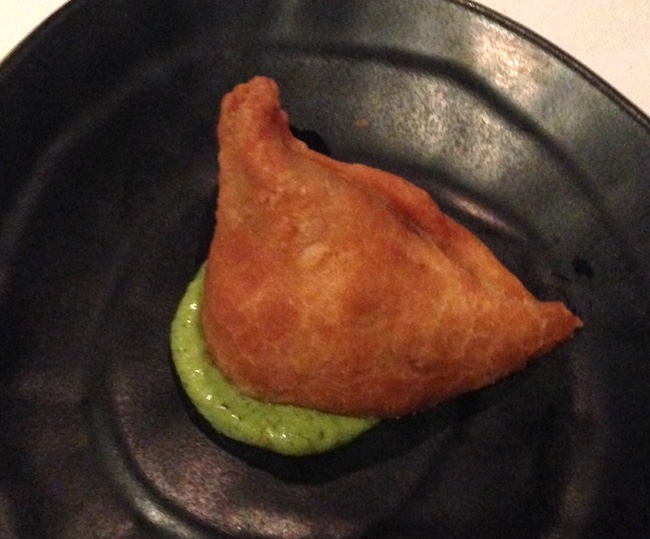
The first course, a variation on Aloo Tikki, saw the addition of dates and pomegranate which added sweetness alongside the savoury potato and sour tamarind. Traditionally plain, salted yoghurt would also be served, however in this case the yoghurt appeared to have been whipped, changing the texture of the dish. The overall result was lighter, slightly sweeter dish, which was well suited to a multi-course menu and perfectly matched by the accompanying Chablis.

Next we sampled a fish course, of King Prawn and Kingfish, cooked in the Tandoor. Needless to say, the extremely high temperature of the traditional clay oven has the potential to risk overcooking and is a test of the most competent of chefs. Thankfully, this was a test the kitchen team passed with flying colours. Both the Kingfish and the King Prawn were moist and succulent, enhanced by the slightly smoky flavours resulting from the tandoor method of cooking. A classic Guwurtztriminer provided an enjoyable and suitably aromatic accompaniment.

After a palate cleansing raspberry and strawberry sorbet, it was time for an intermediary course of Tandoori Murgh Makhanwala, which was served with a raisin pilaf. The variation on the word Makhani, meaning ‘with butter’ suggested we should be for a rich and heavy dish, however what was served to us was much more delicate and full of subtle flavours. The chicken was once again cooked tandoori style, however this time instead of being served dry it sat atop a flavoursome sauce. The pilaf was an excellent partner to the main dish, providing a canvas on which the full flavours came to life. The chicken and sauce were so gently spiced that any trace of heat was imperceptible and the predominant flavour was of tomato and ever so slightly sweet. Unusually perhaps for a white meat course, this was served with a very pleasant Pinor Noir.
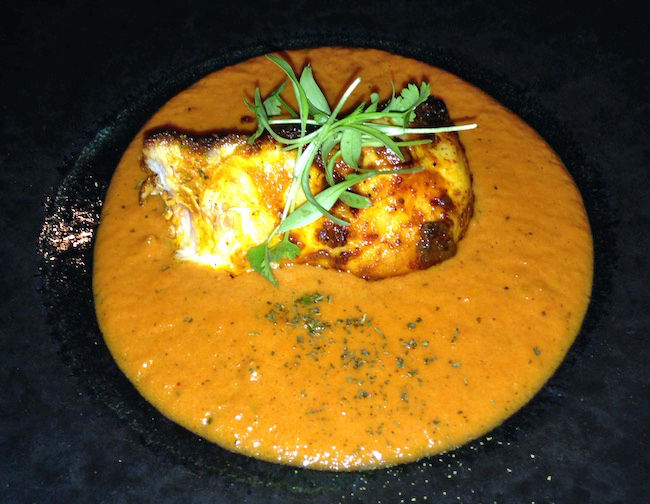
The main course on the tasting menu provides a choice of either Fish (Mangu Chara Cod) or Textures of Lamb.
The fish option was a generous fillet of cod, which had marinated with Malvani spices and then pan seared. It was served with potato and beetroot mash and a garlic and date sauce. Malvani cooking can be very hot however this dish was gentle and did little to measure on the Scoville scale. It did however make good use of subtle flavours such as the date and beetroot. The fish was also expertly cooked, resulting in a good texture and succulence.
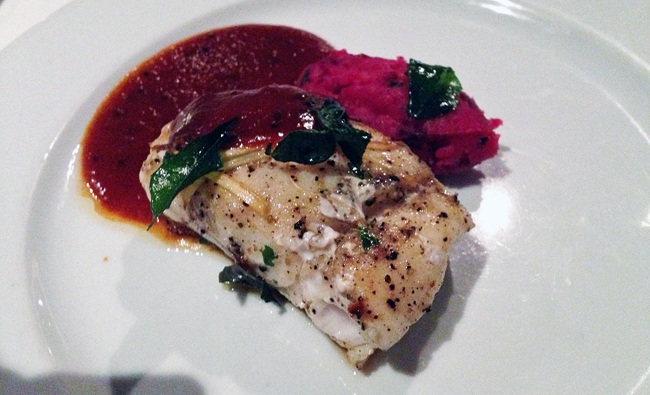
The lamb was our favourite of the two dishes, with the contrasting textures and methods of cooking working extremely well. The lamb chop was soft and tender and the fat had been rendered properly to yield maximum flavour without charring any of the meat. The fennel based marinade was absolutely delicious and both flavoured and protected the meat during the cooking process.

The contrasting texture was provided by a Lamb Bhuna Gosht, which had been slow cooked and melted in the mouth. The sauce of the bhuna was rich and meaty and we were certain to mop up every last drop! The third element to accompany the lamb was a Daal Makhni, a vegetarian lentil dish, prepared with butter. The daal was simple in terms of its flavour profile and provided a pleasant contrast to the intensity of the meat dishes.
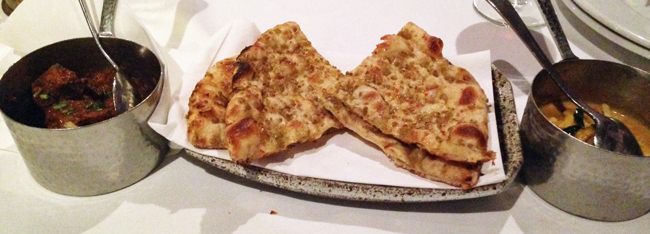
To accompany the main course we enjoyed a basket of naan bread, which were flavoured with Mediterranean ingredients such as olive and tomato. These flavours worked well with the main course and complimented both the lamb and cod dishes. The texture of the bread was soft and the dough seemed to have been enriched, resulting in a texture a bit like fougasse.
A very drinkable Cabernet Sauvignon accompanied both of the main courses.
Finally, the meal was finished with Almond Halwa and Chocolate truffle flan. This was dense and intensely rich and so a small portion of was more than sufficient. A light and creamy almond kulfi rounded off the sweet and provided a cooling end to the meal. A glass of Sauternes was an over-indulgence but very pleasantly ended the meal.

The tasting menu takes a culinary tour of the Indian continent, fusing together elements inspired by different regions and types of cooking. The overall effect is to distil an essence of Indian cuisine, as promised in the name of the restaurant. In each dish, the balance of flavours and textures was finely tuned. The only omission to this careful curation is a hot curry; however given the potential to overpower other flavours; this seems likely to have been a conscious decision.
At £47.95 (£77.95 with wines), the tasting menu is excellent value as well as a tour de force of modern Indian cooking. For lunch Indian Essence offers even better value, with two courses available at only £14.50. With highly courteous and efficient service to boot, Orpington man is onto a good thing!




 Innovative three star Michelin chef, Anne-Sophie Pic will join the Roux family as honorary president of the judges at this year’s Roux Scholarship final.
Innovative three star Michelin chef, Anne-Sophie Pic will join the Roux family as honorary president of the judges at this year’s Roux Scholarship final.
